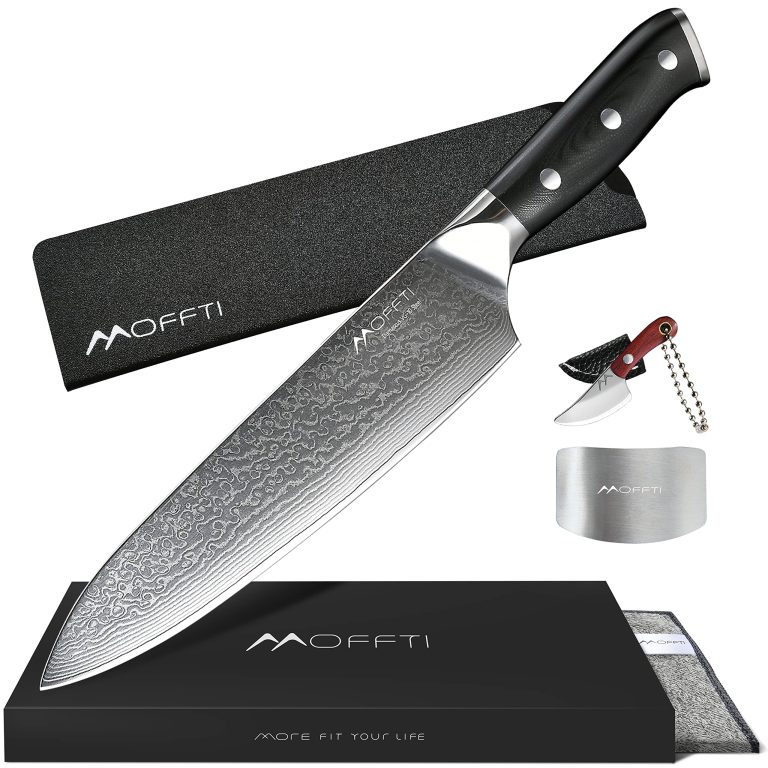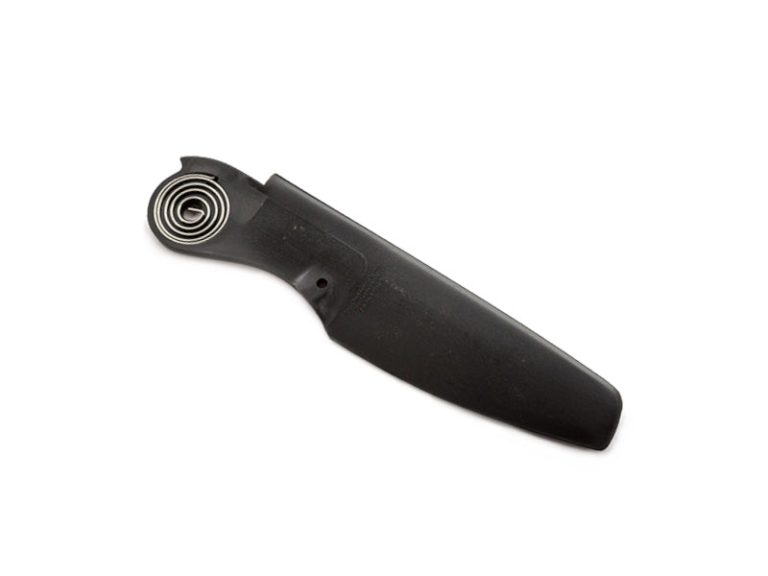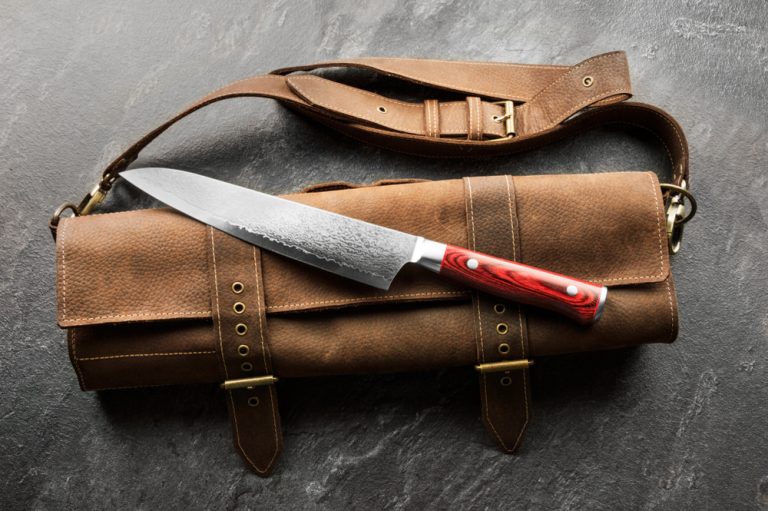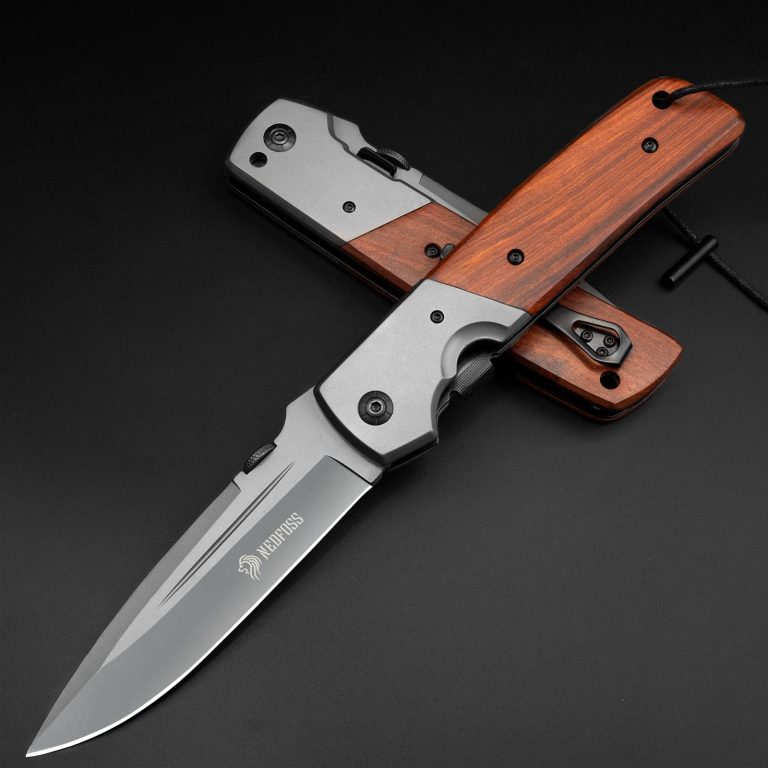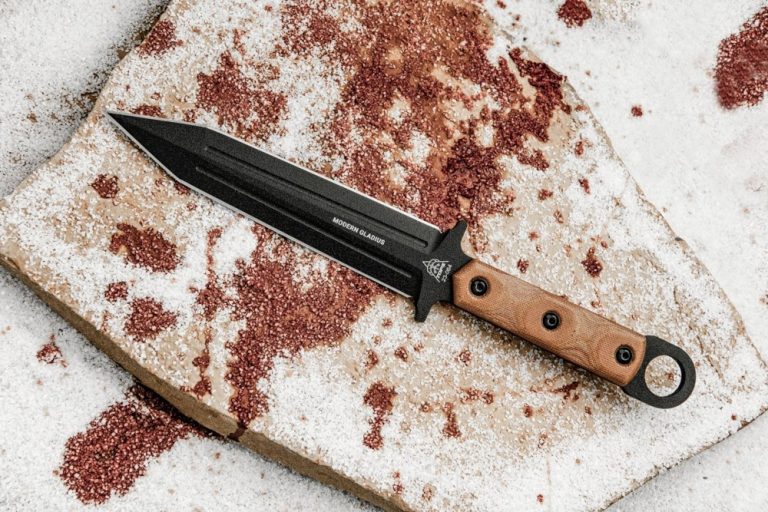When Must a Knife Be Cleaned And Sanitized
A knife must be cleaned and sanitized after each use to maintain hygiene and prevent cross-contamination. Maintaining cleanliness and proper sanitation of knives is essential to ensure food safety and prevent the spread of harmful bacteria and germs.
Failure to clean and sanitize knives can lead to cross-contamination between different food items, increasing the risk of foodborne illnesses. Cleaning involves removing any leftover food particles by thoroughly washing the knife with warm soapy water. Sanitization, on the other hand, involves using heat or chemical solutions to kill any remaining bacteria or pathogens.
By regularly cleaning and sanitizing knives, you can maintain a safe and healthy kitchen environment and protect yourself and others from potential health hazards.
Why Clean And Sanitize Your Knives Regularly
Regularly cleaning and sanitizing your knives is essential to ensure food safety and prevent bacterial contamination. By maintaining proper hygiene practices, you can protect yourself and others from potential foodborne illnesses.
Bacteria can easily accumulate on knives, especially if they come into contact with raw meat, fish, or poultry. Cleaning and sanitizing your knives after each use can help eliminate these harmful bacteria, reducing the risk of cross-contamination.
Furthermore, regular cleaning and sanitizing can help maintain the quality and extend the lifespan of your knives. Proper care and maintenance prevent rust, corrosion, and damage, ensuring that your knives stay sharp and functional for longer.
Make it a habit to clean your knives with warm soapy water after each use. Additionally, using a sanitizer or disinfectant can further eliminate any remaining bacteria. Remember to thoroughly dry your knives before storing them to prevent moisture buildup and potential damage.
| Benefits of Regular Knife Cleaning and Sanitizing: |
|---|
| Prevents bacterial contamination |
| Maintains food safety standards |
| Extends the lifespan of your knives |
How Often Should Knives Be Cleaned And Sanitized
Knives should be cleaned and sanitized regularly to prevent the spread of bacteria and to ensure food safety. After each use, it’s crucial to clean and sanitize the knife to remove any food particles or contaminants that may be present. This applies particularly when handling different types of food, as each type can introduce different bacteria or allergens.
Additionally, knives should be cleaned and sanitized when switching between raw and cooked food. Raw meat, poultry, and seafood can carry harmful bacteria that can contaminate other foods if not properly cleaned. Therefore, it’s essential to clean and sanitize the knife after handling raw food before using it to prepare cooked food.
By following these guidelines and maintaining proper hygiene practices, you can ensure that your knives remain clean and safe to use, reducing the risk of foodborne illnesses.
Signs Indicating That A Knife Needs Cleaning And Sanitization
When Must a Knife Be Cleaned And Sanitized
Keeping knives clean and properly sanitized is crucial for maintaining a safe and hygienic kitchen environment. Here are some key indicators that a knife requires immediate cleaning and sanitization:
- Visible food residue: If you notice any remnants of food on the blade or handle of your knife, it’s time to clean it thoroughly. Food residue can contain harmful bacteria and germs that may contaminate future food preparation.
- Foul odor: A strong and unpleasant odor emanating from the knife indicates the presence of bacteria, mold, or other contaminants. Cleaning the knife properly will eliminate these odors and prevent potential health risks.
- Sticky or greasy feel: If your knife feels sticky or greasy to the touch, it’s an indication that it needs cleaning. This could be a result of oils, fats, or other sticky substances that can harbor bacteria and affect the quality of your food.
Regularly monitoring these signs and promptly cleaning and sanitizing your knives will ensure a healthier and safer food preparation environment in your kitchen.
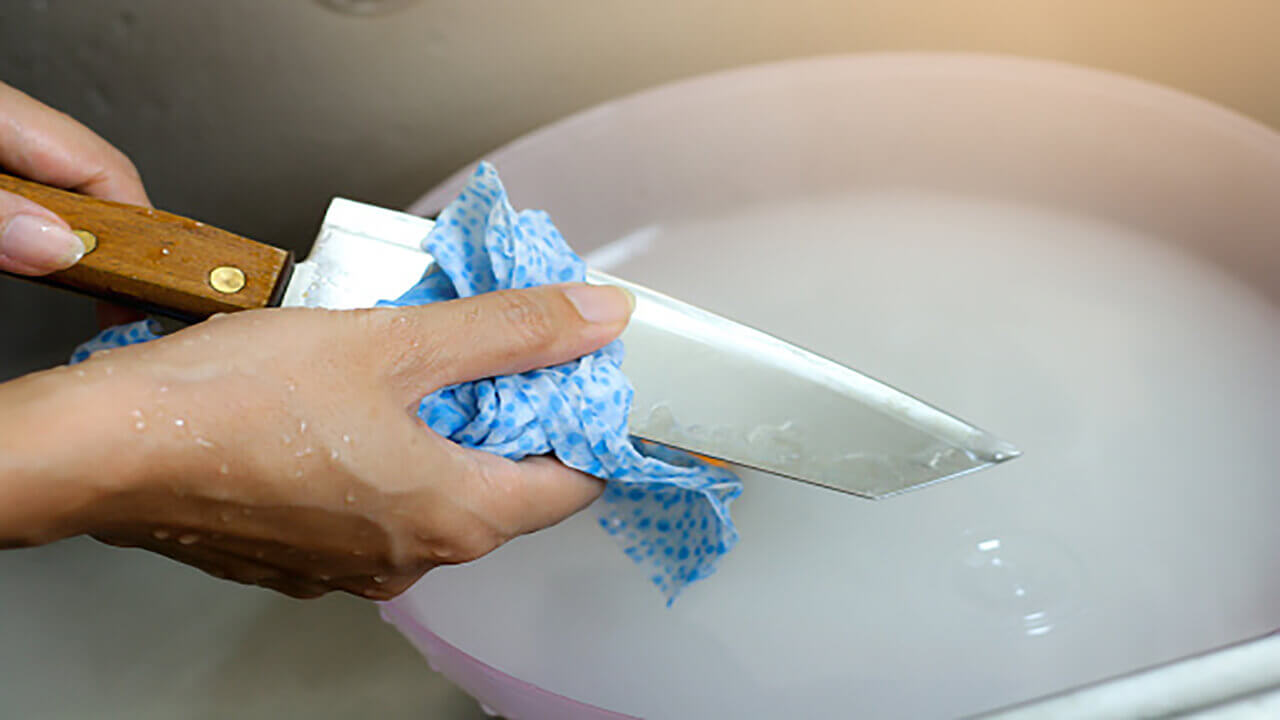
Credit: homerankzone.com
Best Practices For Cleaning And Sanitizing Knives
To ensure the highest standards of hygiene, it is essential to clean and sanitize knives regularly.
In order to practice the best cleaning and sanitizing techniques for knives, follow these guidelines:
1. Use warm soapy water to clean the knives thoroughly. This will help remove any dirt, grease, or residue that may be present.
2. Scrub the knife blade and handle with a sponge or brush to ensure all surfaces are thoroughly cleaned.
3. Rinse the knives with clean water to remove any remaining soap or debris.
4. Dry the knives with a clean towel to prevent moisture buildup, which can lead to rusting.
5. Make sure to sanitize the knives after cleaning by using an appropriate sanitizer, such as a bleach solution or a commercial sanitizer spray.
6. Store the knives in a clean and dry area to prevent contamination and ensure ready access when needed.
By following these best practices, you can maintain the cleanliness and sanitation of your knives, promoting safe and hygienic food preparation.
Special Considerations For Stainless Steel Knives
When it comes to cleaning and sanitizing knives, special considerations need to be taken into account for stainless steel knives. One important guideline is to avoid using abrasive cleaners as they can scratch the surface of the knife and degrade its quality over time. Instead, opt for mild dish soap and warm water to clean the knife thoroughly. After cleaning, it is essential to dry the knife immediately to prevent any rusting and maintain its pristine condition. Additionally, storing knives in a clean and dry place is crucial to prevent any potential contamination or damage. By following these simple steps, you can ensure that your stainless steel knives remain clean, sanitized, and in top-notch condition for their intended use.
Cleaning And Sanitizing Knives In A Professional Kitchen
Knives in a professional kitchen must be regularly cleaned and sanitized to maintain hygiene and ensure food safety. Establishing a proper cleaning schedule is essential for this purpose. By training staff on correct knife maintenance techniques, you can ensure that cleaning is done effectively. Staff should be educated on the importance of using appropriate cleaning agents and methods. Commercial sanitizing solutions are recommended, as they are designed to effectively eliminate bacteria and other contaminants. It is important to follow the manufacturer’s instructions when using these solutions to ensure their effectiveness.
Common Mistakes To Avoid When Cleaning And Sanitizing Knives
When cleaning and sanitizing knives, it is crucial to avoid common mistakes that could compromise their cleanliness and safety. Neglecting to clean the handle can lead to the buildup of bacteria and other harmful substances. It is essential to give equal attention to the handle as well as the blade during the cleaning process.
Another mistake to avoid is using harsh cleaning agents. Abrasive cleaners or strong chemicals can damage the knife’s surface and potentially contaminate the food it comes into contact with. Rather, opt for mild soap and warm water or a recommended knife cleaner.
Additionally, storing knives when they are still wet can promote rust and bacterial growth. Make sure to thoroughly dry the blades and handles before storing them in a safe and dry location.
| Mistake | Solution |
| Neglecting to clean the handle | Pay equal attention to cleaning the handle and blade |
| Using harsh cleaning agents | Use mild soap and warm water or recommended knife cleaner |
| Storing knives when still wet | Thoroughly dry the blades and handles before storage |
Key Takeaways
When Must a Knife Be Cleaned And Sanitized
Regularly cleaning and sanitizing knives is essential for food safety. Proper cleaning practices can extend the lifespan of your knives. Following best practices and avoiding common mistakes will ensure effective knife cleaning and sanitization.
Guidelines for Knife Cleaning and Sanitization:
| S.No. | Guidelines |
|---|---|
| 1. | Wash knives immediately after use with warm water and dish soap. |
| 2. | Use a sponge or brush to remove any food residues or stains. |
| 3. | Avoid using abrasive cleaners or scrubbers that may damage the knife’s blade. |
| 4. | Dry knives thoroughly after washing to prevent rusting or corrosion. |
| 5. | Sanitize knives using a solution of bleach and water or a commercial sanitizing agent. |
| 6. | Store knives in a designated knife block or protective covers to avoid accidents and maintain hygiene. |
By adhering to these guidelines, you can ensure that your knives are clean, sanitized, and safe for use in the kitchen. Remember, proper knife hygiene is crucial for preventing cross-contamination and maintaining healthy food preparation practices.
Conclusion
To maintain a safe and hygienic kitchen, it is essential to clean and sanitize knives regularly. By following these proper cleaning practices, you can prevent the growth and spread of harmful bacteria. Remember to always handle knives with caution, using the correct techniques to avoid accidents and injury.
Regularly wipe down your knives after use and be sure to wash them thoroughly with soap and water. Additionally, consider using a sanitizing solution to further eliminate any lingering bacteria. Proper drying and storage are also important to prevent rust and maintain the integrity of the blade.
Taking these precautionary measures will not only ensure the longevity of your knives but also keep your food preparation environment clean and safe for you and your loved ones. So, make it a habit to clean and sanitize your knives regularly to promote a healthier and more efficient kitchen.

